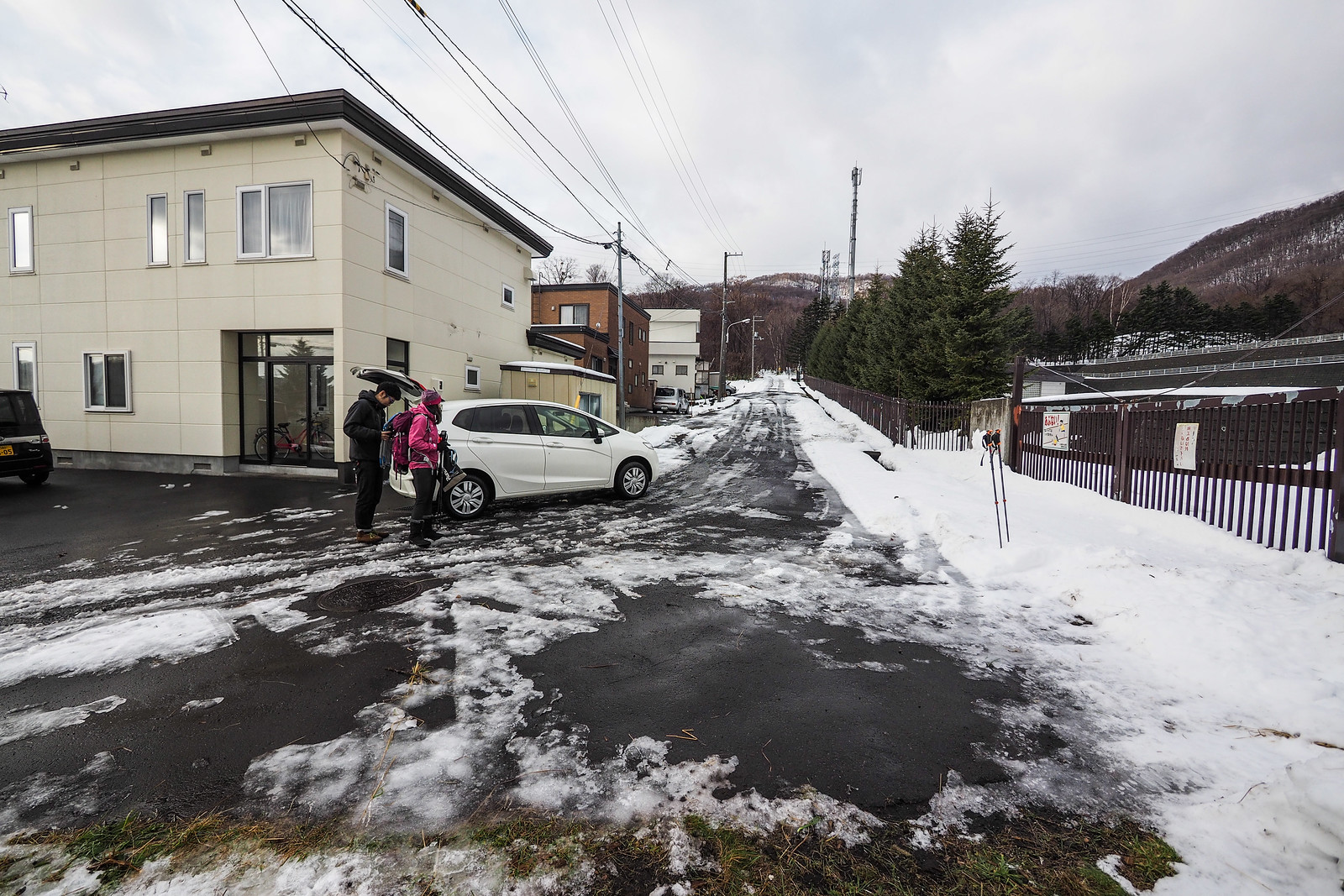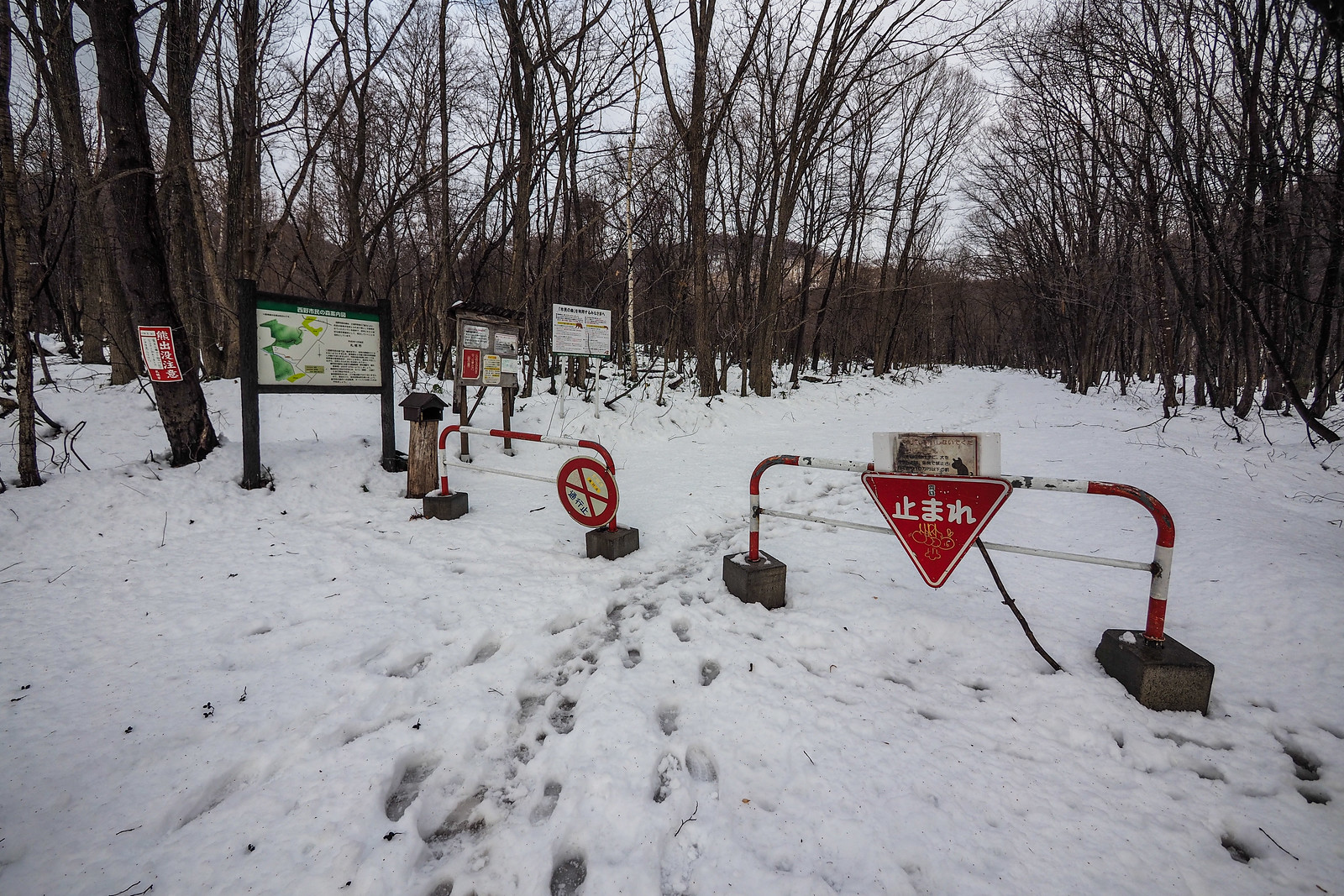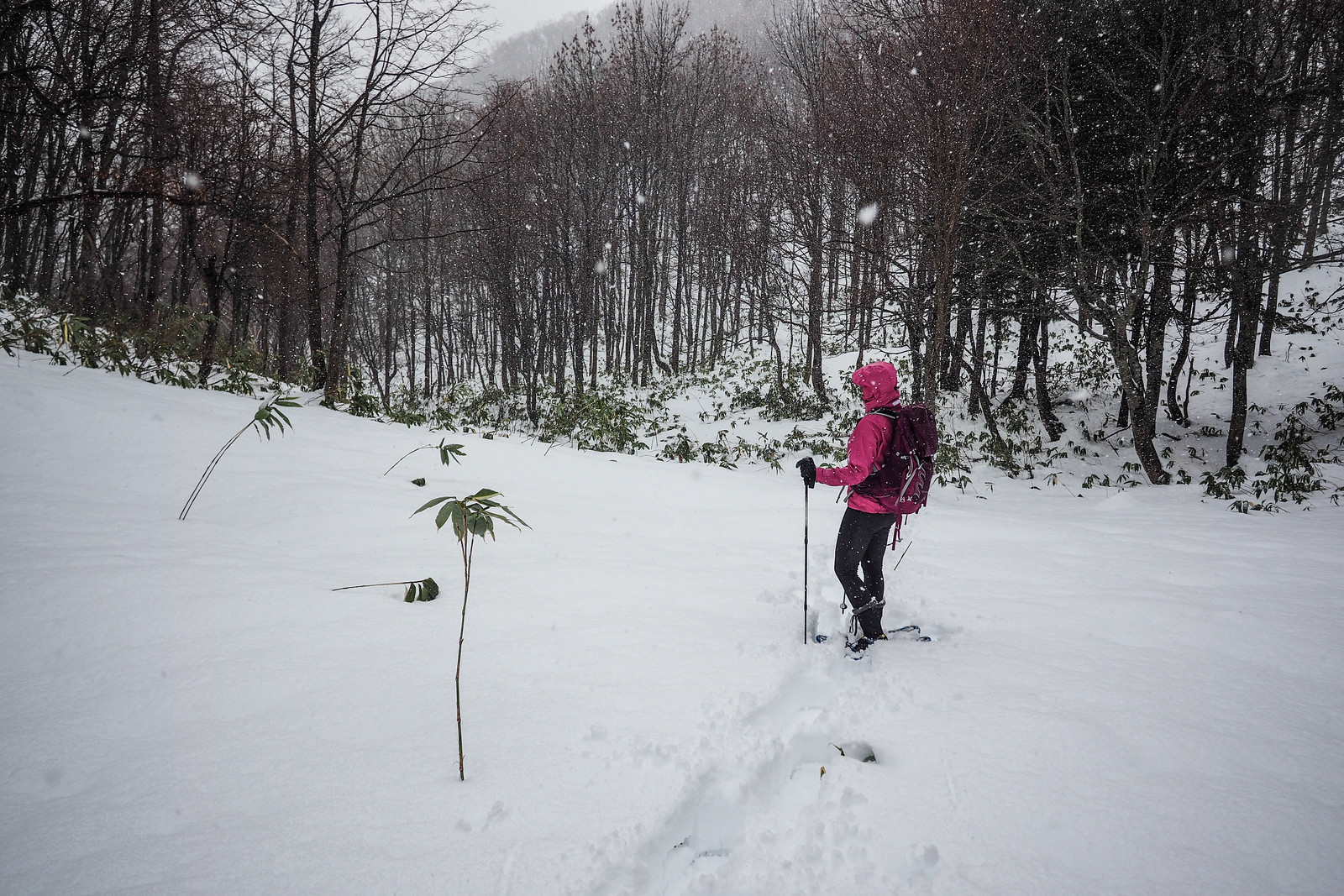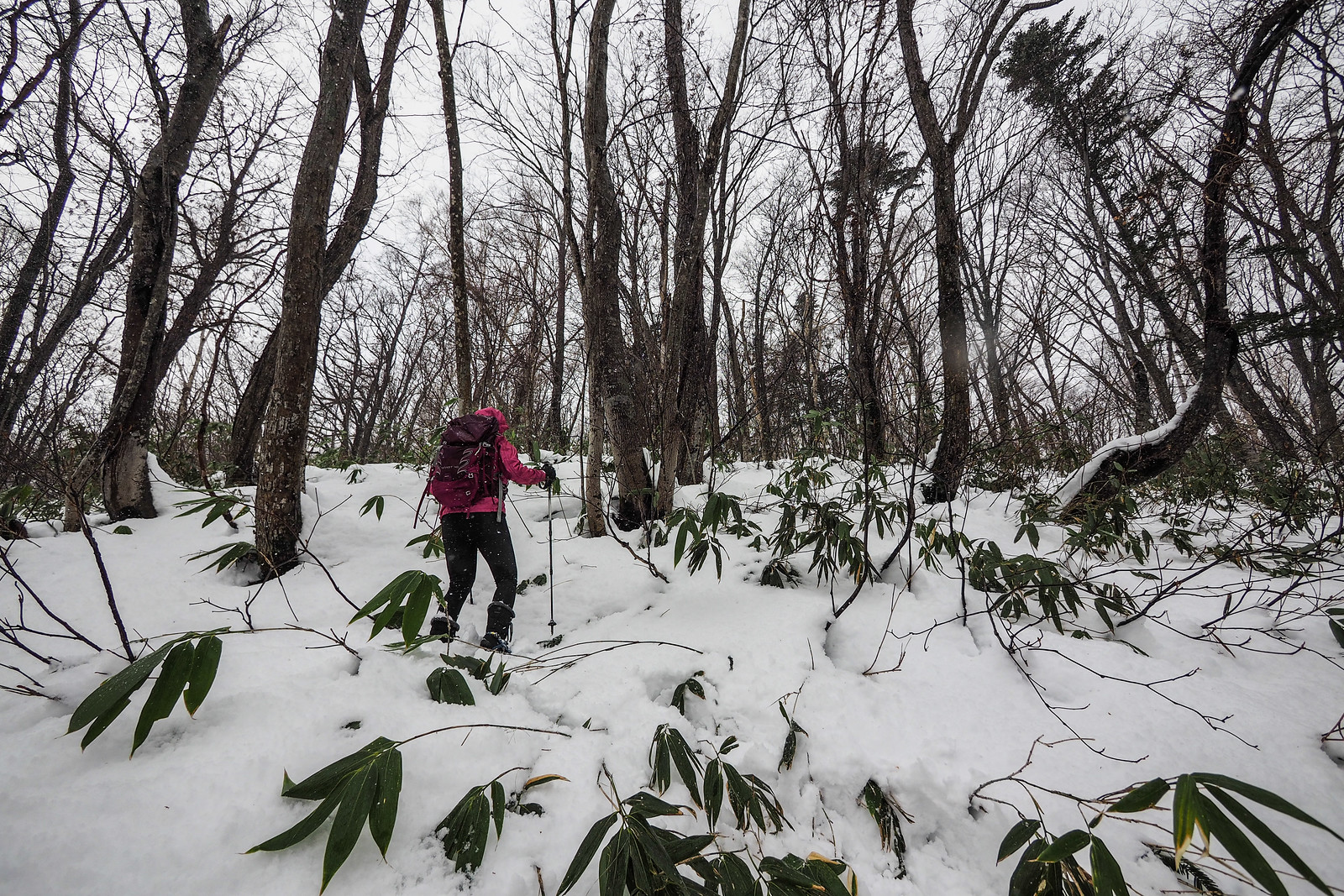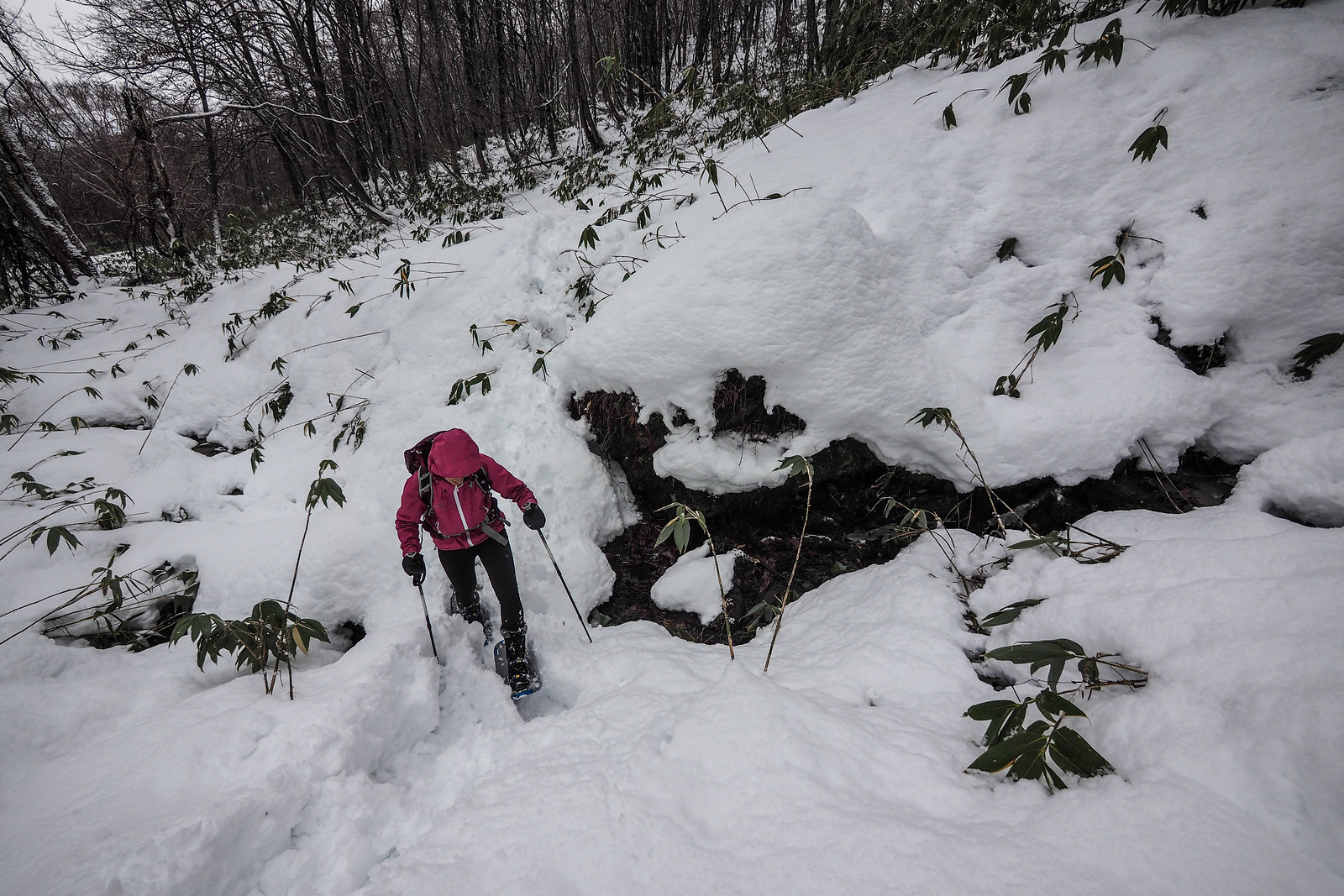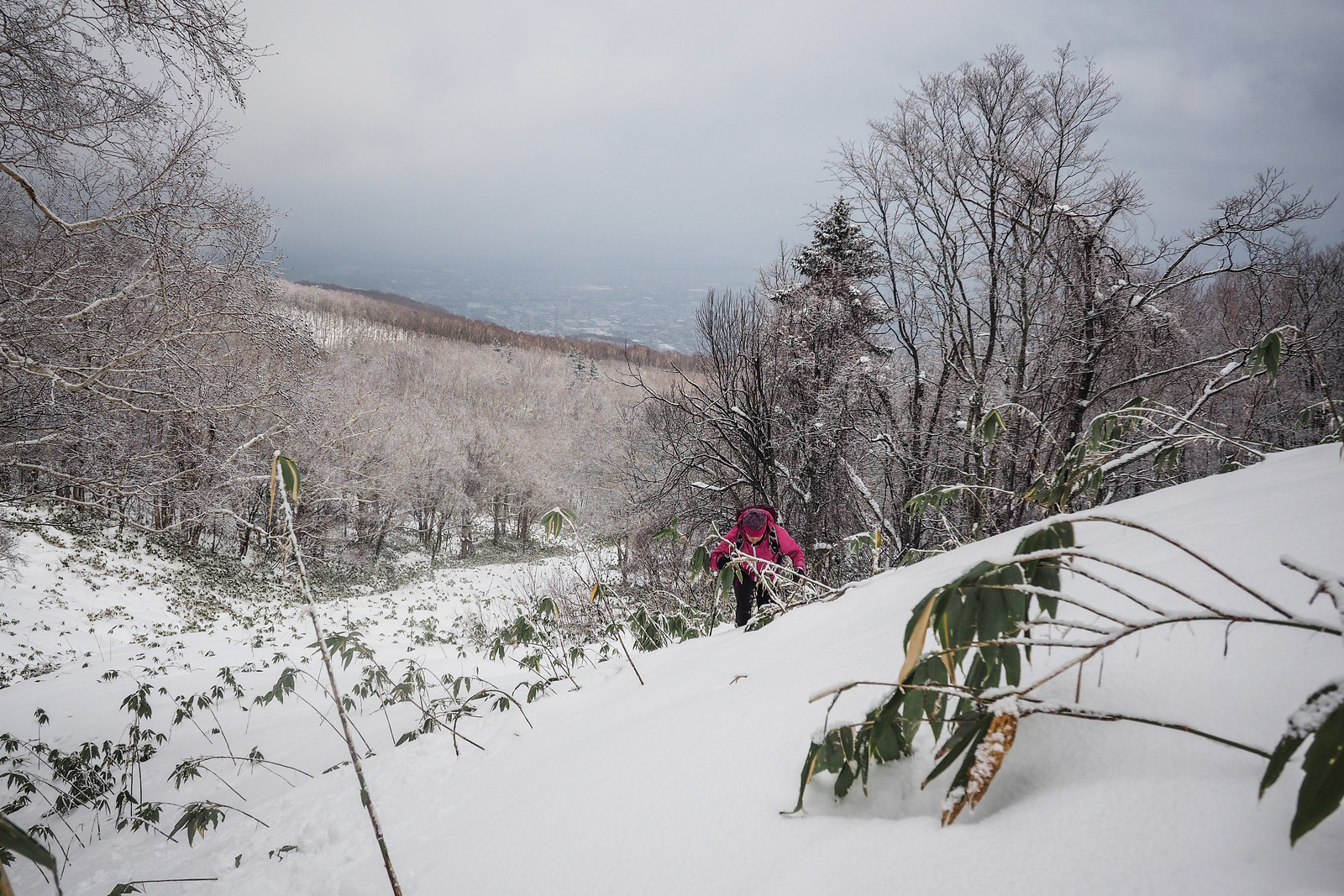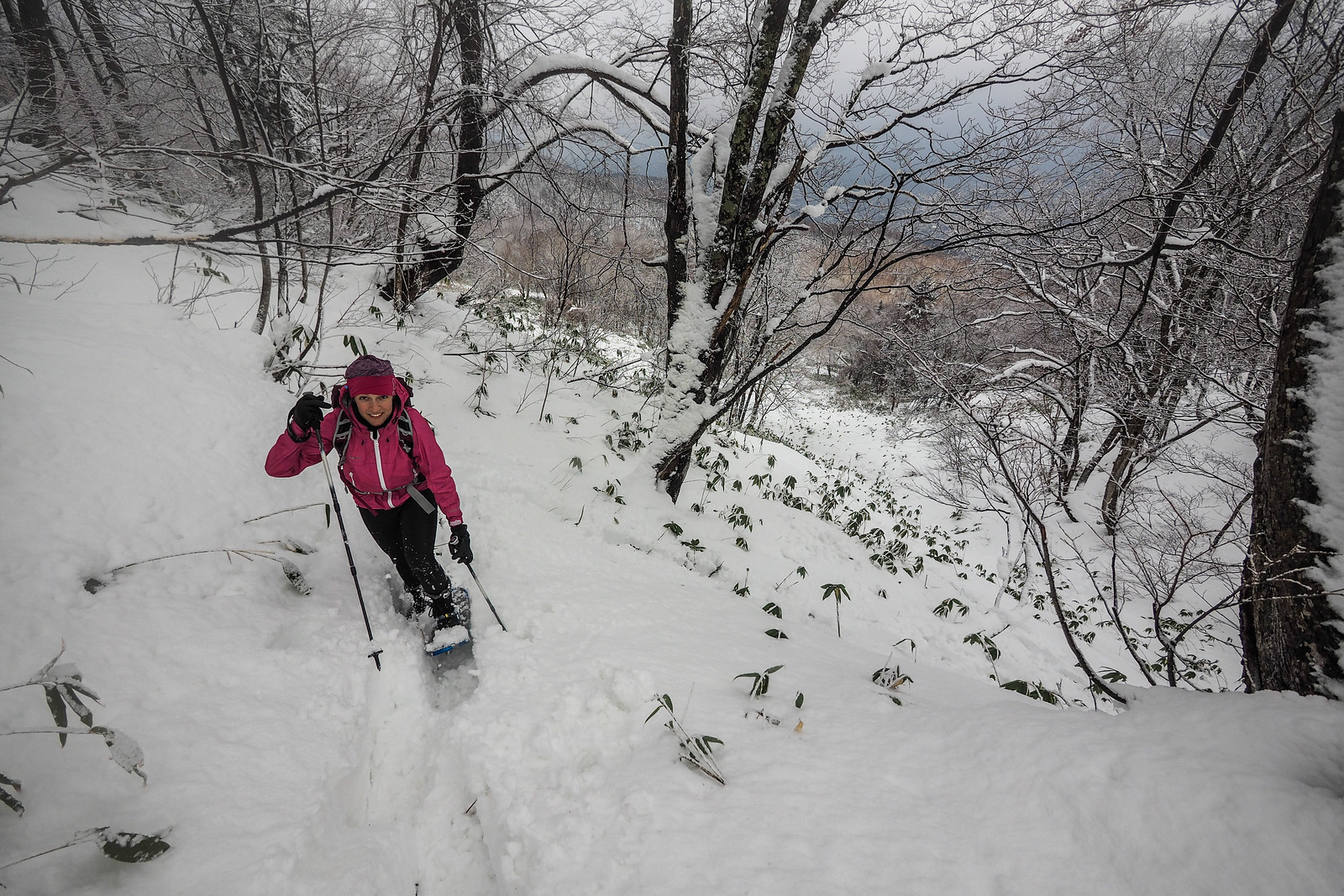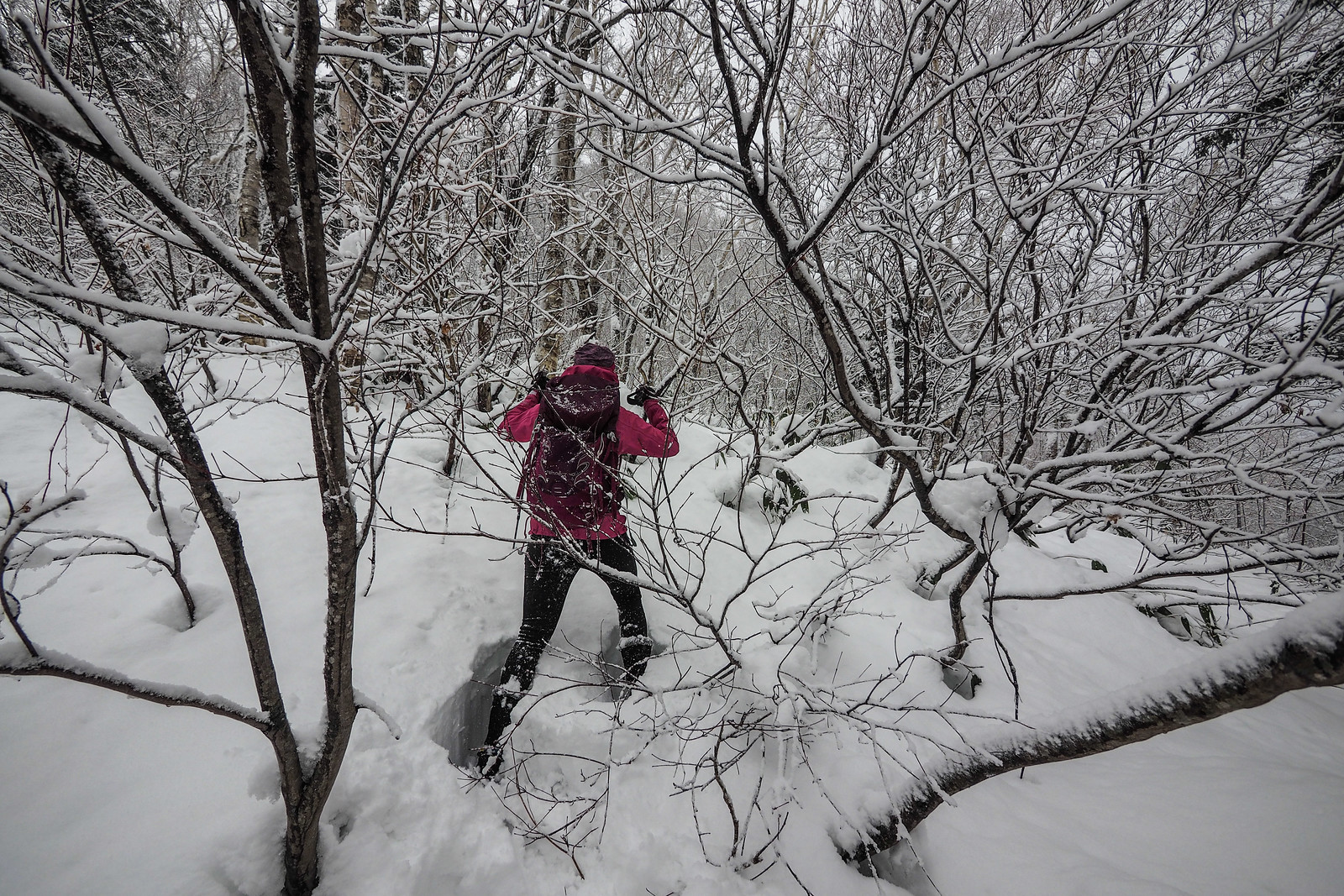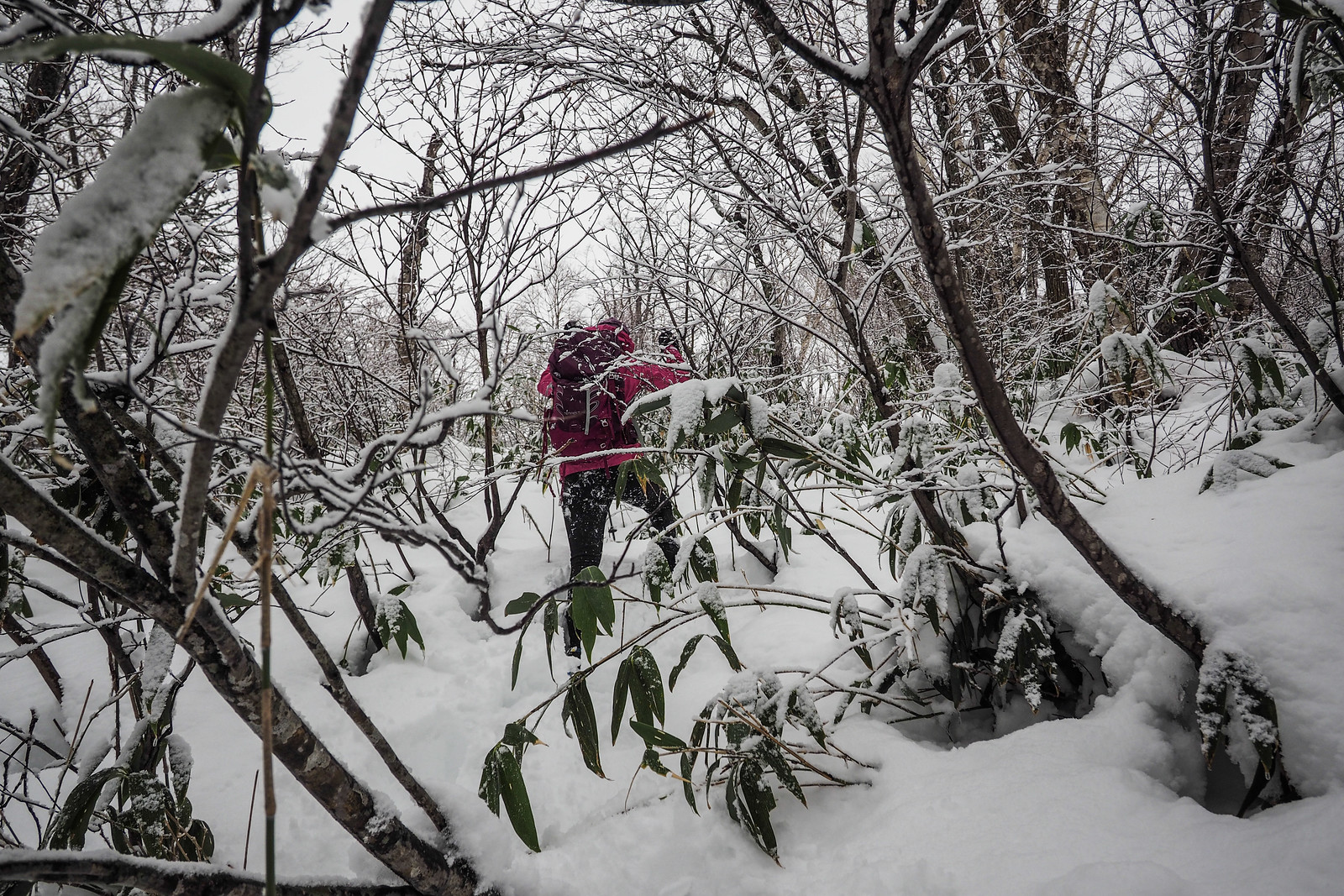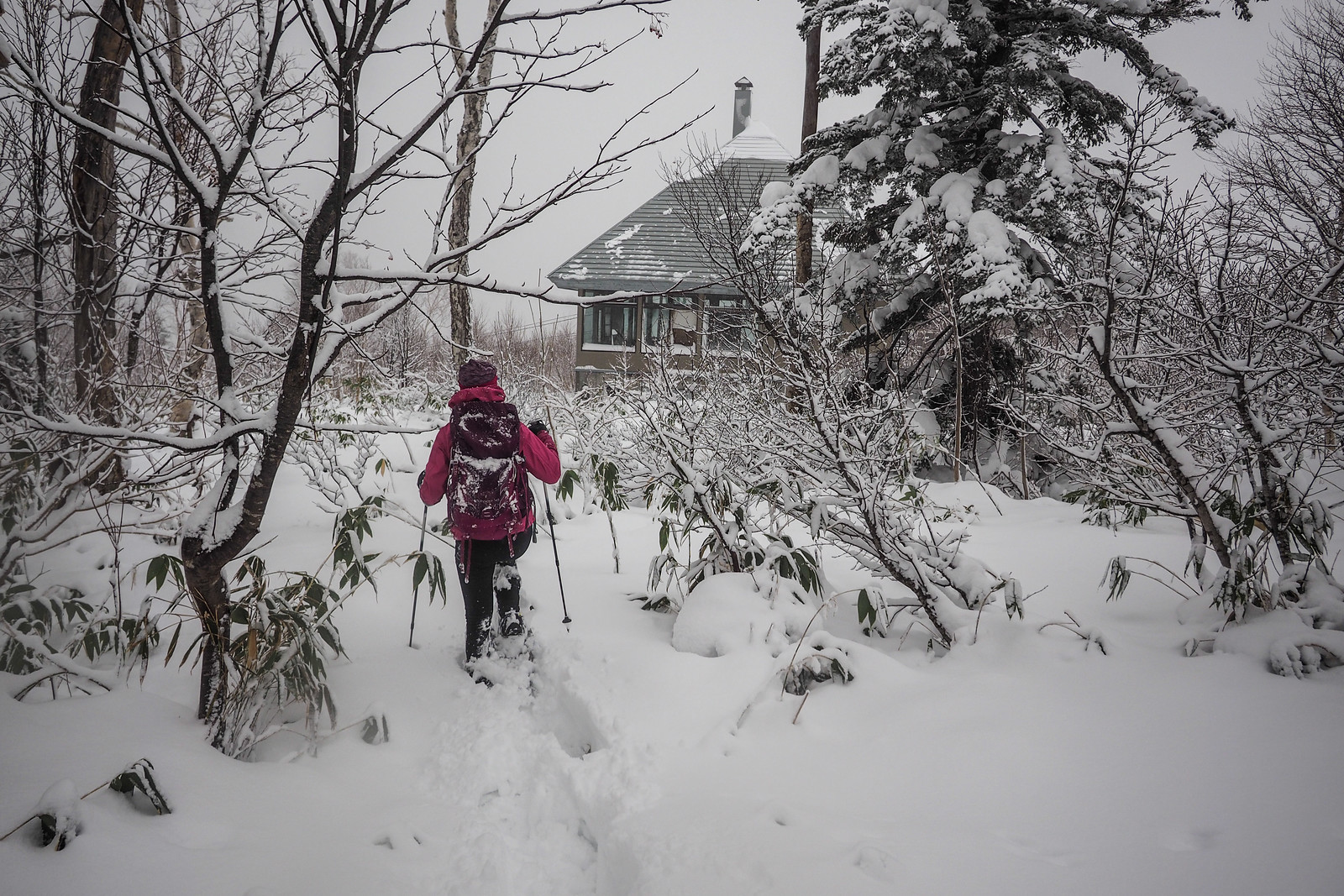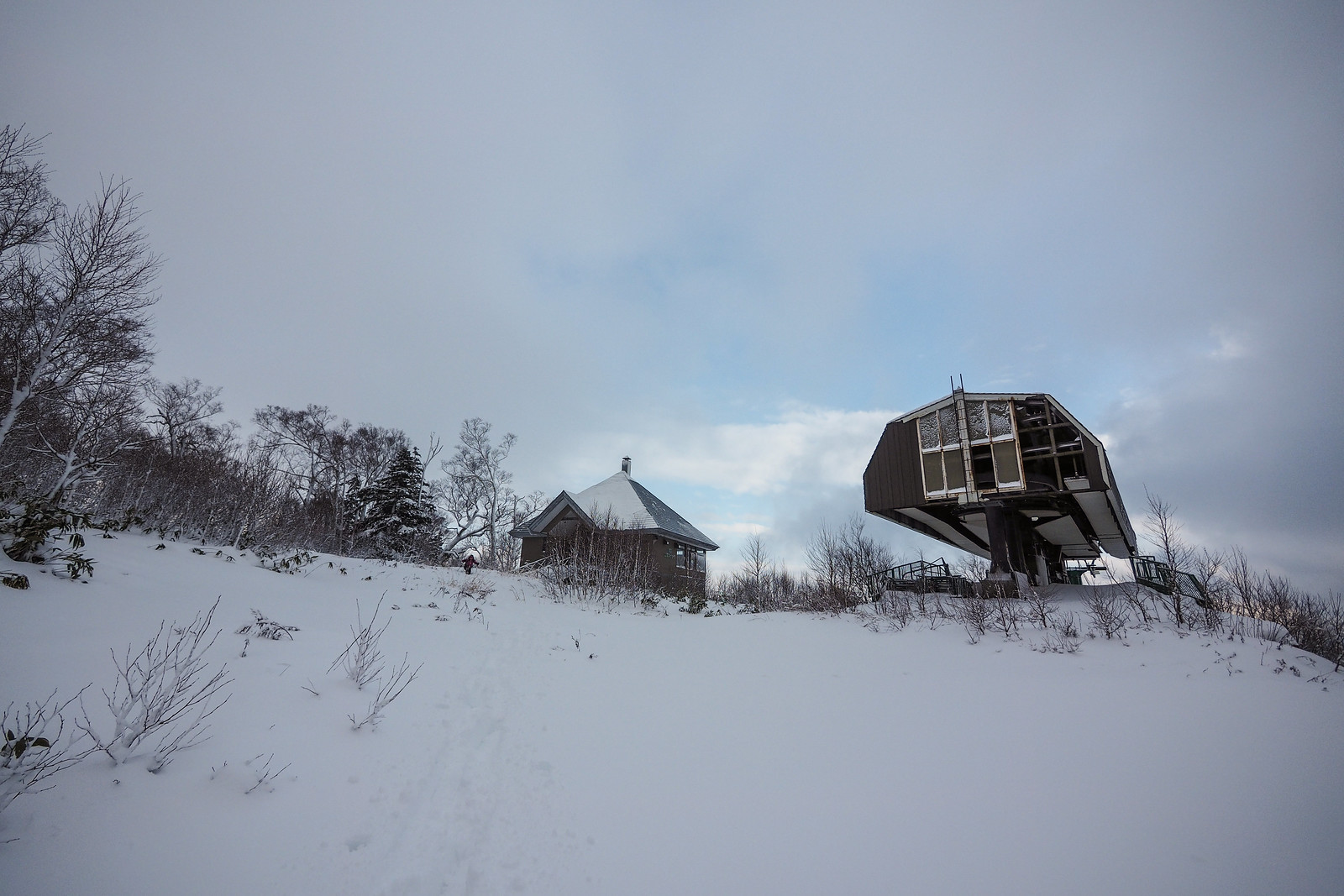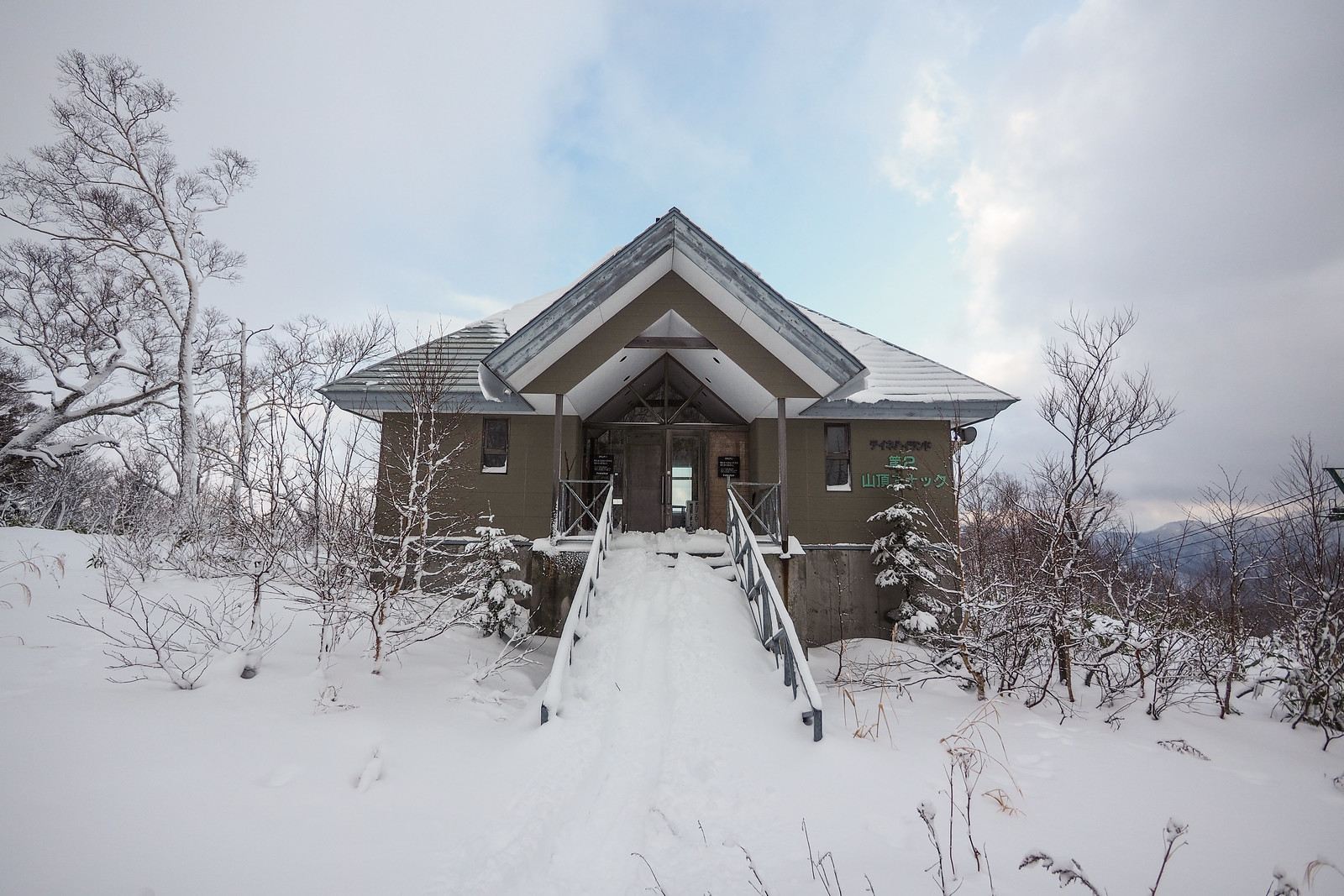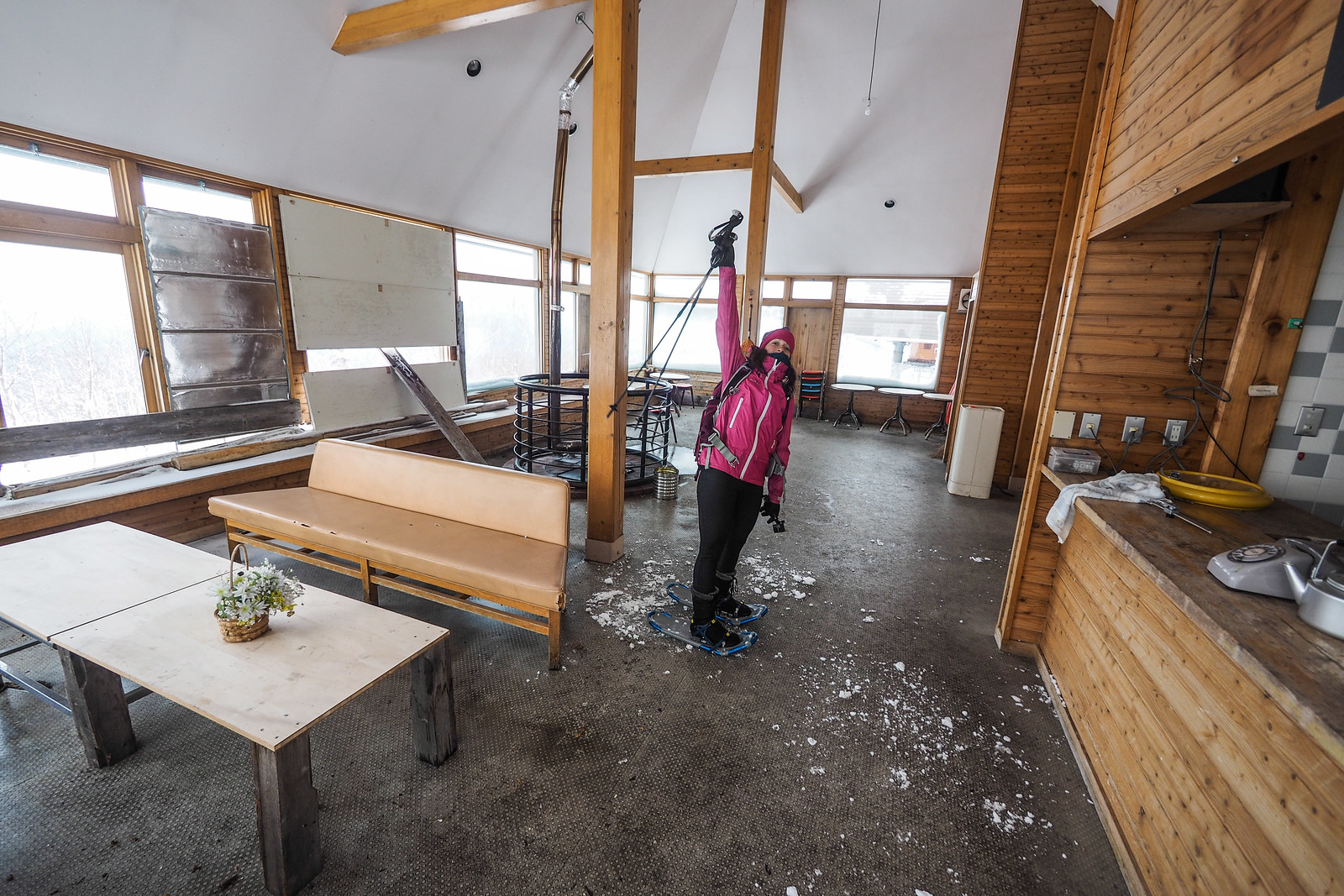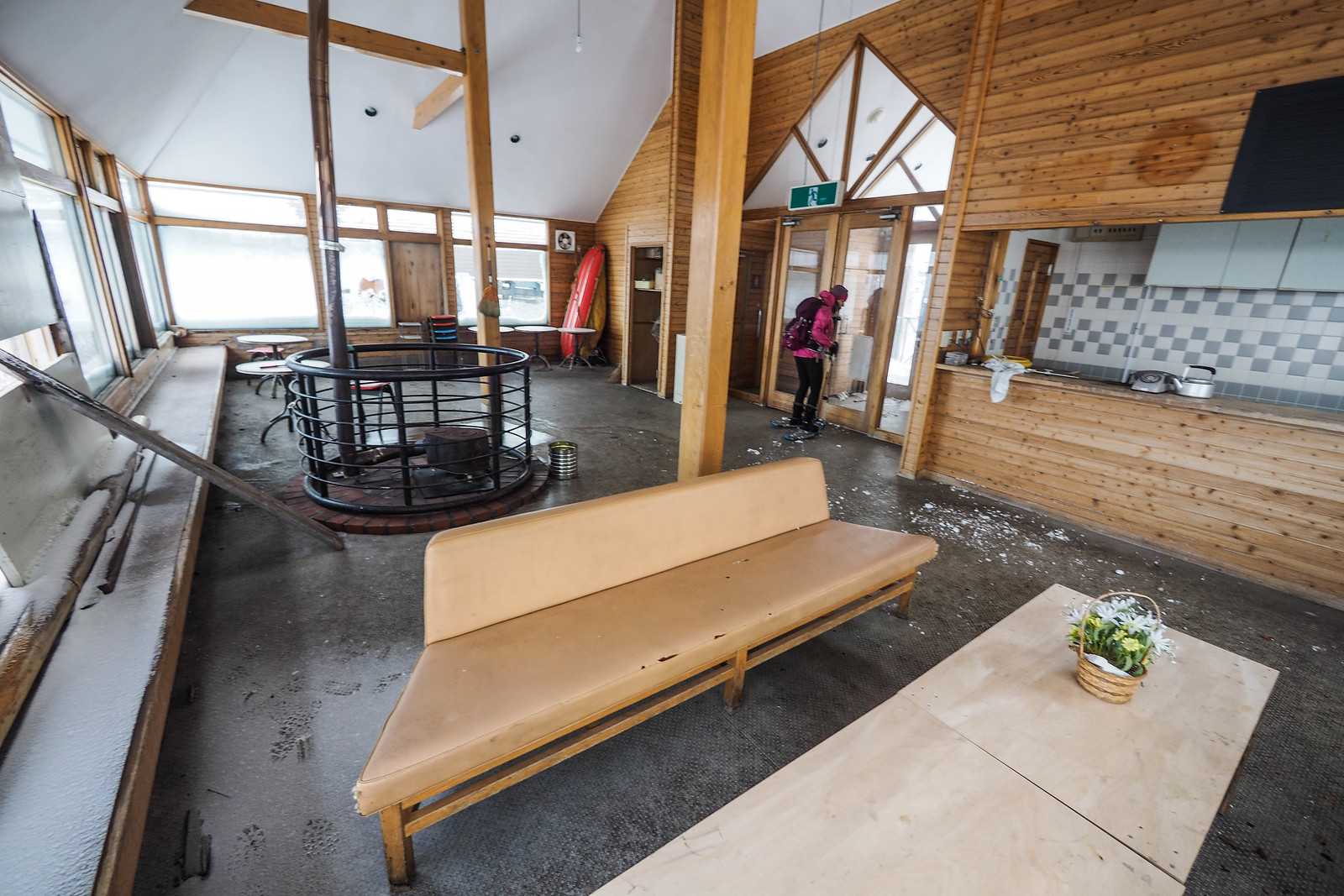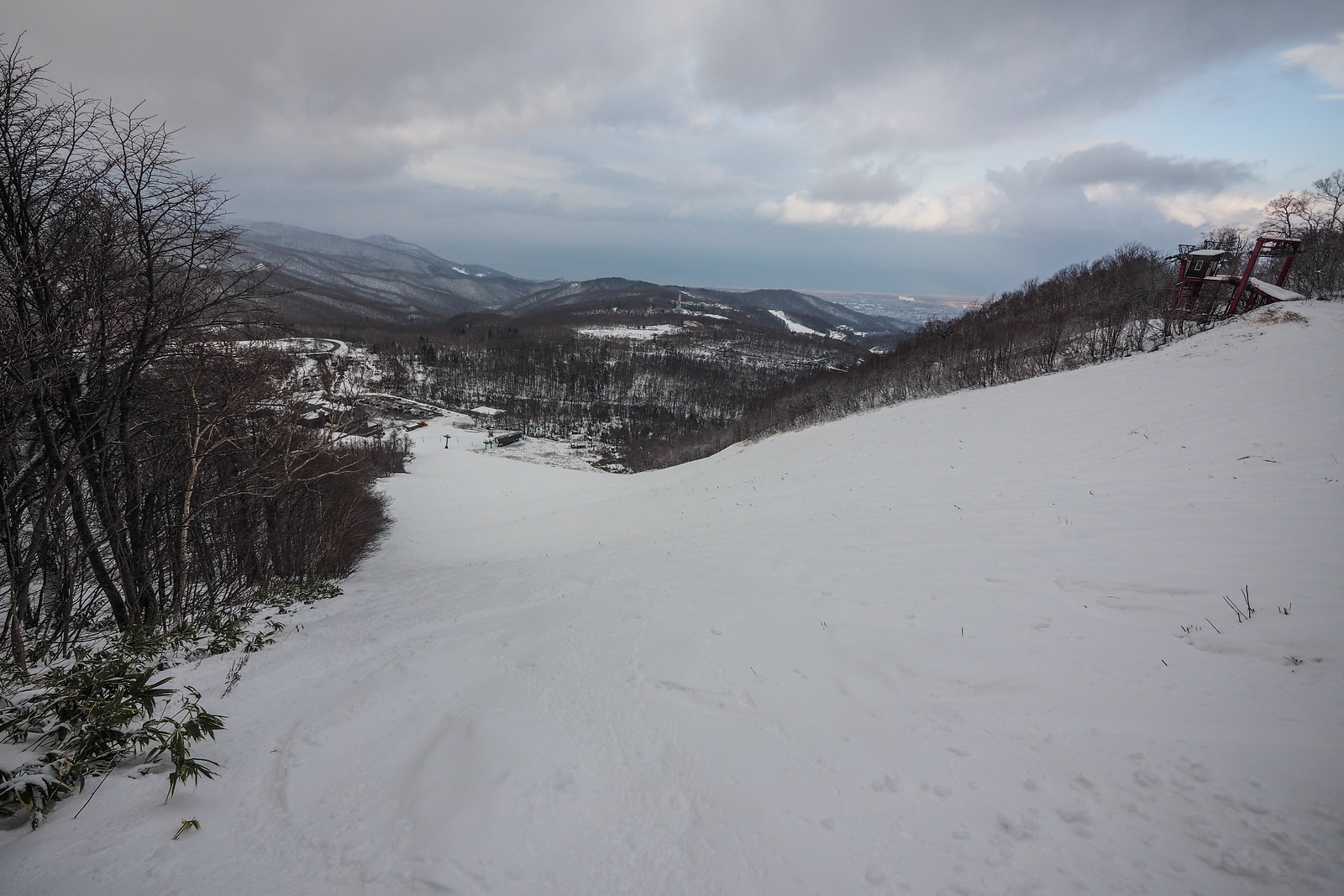From there the mostly unmarked route loosely runs parallel to an old unused forestry road before cutting directly up the Nanako-kawa stream (中の川) valley, across a couple of zig and zags in the forestry road.

This early on in the season, the snow condition was just deep enough to warrant the use of snowshoes down below, but almost shallow enough not to bother about snowshoes.
For the first 45 minutes or so, we trudged along under light showers of sleet and rain. Mercifully, this slowly turned to snow as we ascended. At the small clearing above, we both noticed a flurry of wings on the snow, and were treated to an owl hurriedly flying up into a tree. The beautiful creature gazed down at us with its deep black eyes – a master of its domain. Szilvia got a photo of it on her smartphone…can you see it?

As we ascended higher, the base-less snow got deeper, and the challenge was trying to find a route which avoided the sasa bamboo as much as possible. Later on in the season, the sasa would be completely covered, with a relatively sold base of snow under the soft top layer of snow. In the latter half of our trip this time, we spent a lot of time sinking up to our knees or deeper in snow and sasa.
At times, the clouds would lift just enough to remind us that we were in fact snowshoeing in glorious nature, right next to a city of almost 2 million people. Another reminder of why I love this place so much.
As we neared the nondescript, rather flat summit of Neopara, we spent a vigorous 20 minutes or so bush-bashing through twiggy brush, weaving a route on the final approach. I reminded Szilvia that this is not the typical way most people experience snowshoeing for the first time!
As I was doing some research about this route on the web, I had seen some mention of an abandoned restaurant at the summit, next to a defunct ski lift. Once part of Teine Ski field, there were conflicting reports as to whether the building was left unlocked during the winter months for hikers and skiers. I was quietly hopeful that it would be open, as it would be a nice place to get some shelter as we scoffed down some lunch. Soon after breaking our way through the brush near the summit of Neopara, we found the building.
Mercifully, the doors were unlocked, and we were able to spend a precious 15 minutes or so eating our packed lunches. It goes without saying that this building is well and truly abandoned, with multiple windows missing.
In the route map above, and in the Hokkaido Yukiyama Guide, the idea is to return the way you came up. However, due to the slow going on the way up, we’d already taken just over four hours to get to the summit. It was now 1:30pm, and I was wary about our prospects for a quick descent. Later in the season, a decent base of snow would allow for run snowshoe-running down the slope. Today, however, we’d be contending with sasa and brush that would happily snag our snowshoes with every lunge down the hillside.
So we decided to carry on over to the Teine Ski field and get a bus back down to the train station from the ski area buildings. The legality of doing so is probably a bit of a grey area, and I certainly felt conspicuous trudging down the ski runs on snowshoes. But it certainly saved us a lot of time.
So here is the actual route we took this time around.
As it turned out, however, the grand plan to get a bus down from the ski area buildings was thwarted – it was still too early in the season for the regular buses to be running.
Hitch-hiking seemed the only reasonable alternative. No sooner had we stuck our thumbs out for a lift, however, we got picked up by an enthusiastic ski school mini-bus, full of wide-eyed school kids. Even better, it was a ski school located over the road from the very subway station we needed to go to.
A thoroughly satisfying end to an adventurous day out.









